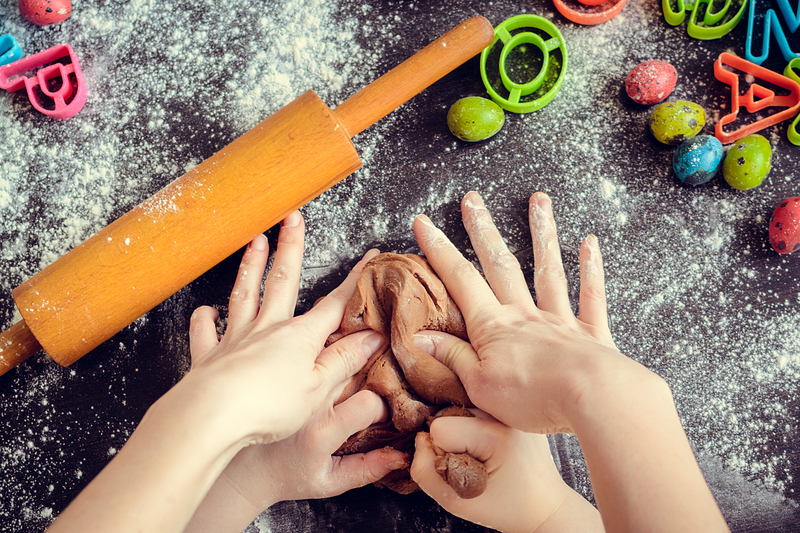Stain Removal Techniques for Wood Floors
Posted on 25/06/2025
Stain Removal Techniques for Wood Floors
Wood floors are cherished for their elegance, durability, and timeless appeal. However, they are not immune to stains, which can mar their aesthetic beauty. Understanding effective stain removal techniques is crucial for maintaining the pristine condition of your wood floors. This article explores various methods and materials to remove stains, ensuring your wood floors remain as beautiful as the day they were installed.
Understanding Different Types of Stains
Before diving into specific removal techniques, it's essential to understand the types of stains that commonly afflict wood floors. Knowing the nature of the stain will guide you to the appropriate removal method.
- Water Stains: These are typically white or light-colored marks caused by water penetrating the wood's finish.
- Oil-Based Stains: These darker stains are often the result of spilled food, grease, or oils.
- Ink Stains: Ink can penetrate deep into the wood, making it particularly stubborn to remove.
- Pet Stains: These can be a combination of biological waste and can cause both discoloration and odor.
- Wear and Tear Stains: Over time, foot traffic can lead to dirt and grime buildup, resulting in soiled looking wood floors.

Preparation and Precautions
Before attempting any stain removal, prepare the area and gather necessary materials:
1. **Clear the Area:** Remove rugs, furniture, and any obstacles to ensure you have a clean workspace.
2. **Test the Method:** Always test your chosen stain removal technique on an inconspicuous area to ensure it won't damage or discolor your floor.
3. **Ventilation:** For methods involving chemicals or strong-smelling substances, ensure good ventilation in the room.
4. **Safety Gear:** Use gloves, masks, and eye protection to protect yourself from harmful substances.
Stain Removal Techniques
1. Removing Water Stains
Using Iron and Cloth
One of the simplest methods for removing water stains involves an iron and cloth:
1. Place a clean, dry cloth over the stain.
2. Set your iron to warm (no steam).
3. Press the iron over the cloth for a few seconds.
4. Lift the cloth to check the stain; repeat if necessary.
Using Toothpaste
You can also use non-gel toothpaste:
1. Apply a small amount of toothpaste to the stain.
2. Rub gently with a soft cloth or toothbrush.
3. Wipe clean with a damp cloth and dry thoroughly.
2. Removing Oil-Based Stains
Using Baking Soda
Baking soda is an excellent abrasive that can absorb oil.
1. Sprinkle baking soda over the stain.
2. Let it sit for a few hours or overnight.
3. Wipe away the baking soda with a damp cloth.
Using Vinegar Solution
1. Mix one part white vinegar with two parts water.
2. Dab the solution onto the stain with a cloth.
3. Wipe it off with a clean, damp cloth, then dry the area thoroughly.
Advanced Stain Removal Techniques
3. Removing Ink Stains
Using Isopropyl Alcohol
Ink stains can be challenging. Isopropyl alcohol works well:
1. Moisten a cloth with isopropyl alcohol.
2. Gently rub the ink stain.
3. Wipe with a damp cloth and dry.
Using Sandpaper
For deep-set ink stains, light sanding might be necessary:
1. Use fine-grit sandpaper to gently sand the stained area.
2. Wipe away dust with a cloth.
3. Reapply your wood finish to protect the sanded area.
4. Removing Pet Stains
Using Enzymatic Cleaners
Enzymatic cleaners break down organic materials:
1. Apply the cleaner to the stain following the manufacturer's instructions.
2. Let it sit for the recommended time.
3. Wipe up with a clean, damp cloth.
Using Hydrogen Peroxide
1. Soak a cloth in hydrogen peroxide.
2. Lay the cloth over the stain and leave for a few hours.
3. Remove the cloth and wipe the area with a damp cloth, then dry.
Prevention and Maintenance
Regular Cleaning
Preventing stains starts with regular cleaning:
1. Dust mop daily to remove dirt and grit.
2. Use a damp mop with a wood floor cleaner weekly.
Protective Measures
Take steps to protect areas prone to spills and stains:
1. Use rugs or mats in high-traffic areas and near entry points.
2. Place absorbent pads under pet water bowls and food dishes.
Refinishing and Resealing
Periodic refinishing and resealing can protect your wood floors:
1. Every few years, depending on wear, consider refinishing.
2. Reseal the wood to provide a protective barrier against stains.

Special Tips for Exotic Woods
Different wood species may require specialized care:
- **Teak:** Resistant to stains but can be treated with teak oil.
- **Cherry:** Use gentle cleaners to avoid dulling the finish.
- **Maple:** Light sanding for deep stains; be cautious with water.
Conclusion
Maintaining the beauty of your wood floors requires understanding the right stain removal techniques. From everyday household items like toothpaste and baking soda to specialized cleaners like enzymatic solutions, each method has its place depending on the type of stain you're dealing with. Prevention through regular cleaning and protective measures will minimize the occurrence of stains, preserving the elegance of your wood floors. By adopting these techniques, you can ensure your wood floors remain a stunning feature of your home for years to come.

